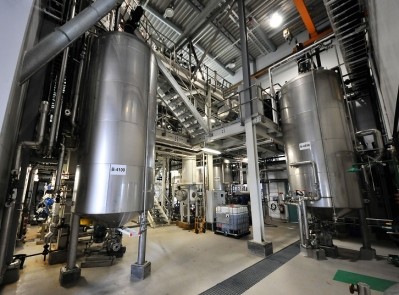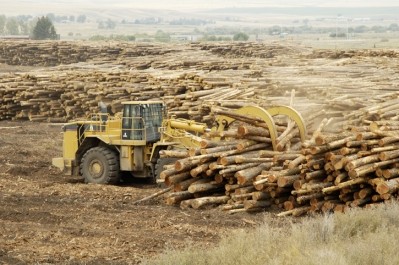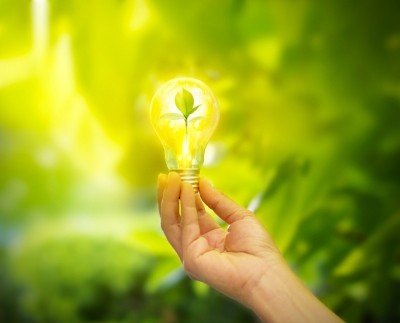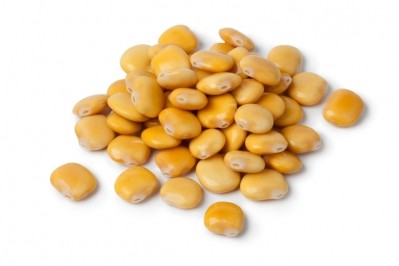Forest to feed: Norway shining spotlight on yeast protein

Margareth Øverland, professor in nutrition at Norwegian University of Life Sciences (NMBU) and director of Foods of Norway, a Center for Research-based Innovation (CRI), told this publication:
“Today, when it comes to price, we have the technology to produce yeast protein derived from lignocellulosic biomass that can compete with fishmeal, but not with soy protein concentrate.
“The cost of tree biomass derived yeast production is currently high. But cost is always an issue with new technology. Every process is faced with the same challenge in that regard.
“So we need to optimize the whole value chain, play around with nutrients and nitrogen inputs at the bio refinery stage, to make high quality yeast protein development, based on renewable natural resources like tree biomass, efficient and profitable.”
FeedNavigator is hosting a webinar on 6 October on the pros and cons of protein alternatives like insect meal, microalgae, and single cell bacteria for use in fish and poultry diets. You can REGISTER for the event here.
The research efforts of Øverland and her team at Foods of Norway are focused on the development of high-quality novel feed ingredients based on renewable natural resources.
And she recently co-authored a review, published in the journal Society of Chemical Industry, summarizing the current literature on the potential of yeast from lignocellulosic biomass as an alternative protein source for the aquaculture industry.
That review concluded such products can be used as attractive protein sources with the additional benefit of improving immune function and intestinal health of the fish. "This is where the added value is," said Øverland.
“Studies have shown that yeasts such as Saccharomyces cerevisiae, Candida utilis and Kluyveromyces marxianus have favorable amino acid composition and excellent properties as protein sources in diets for fish, including carnivorous species such as Atlantic salmon and rainbow trout,” found the review.
Forest to feed
Currently, the fish feed industry is dependent on high-quality protein sources of marine and plant origin.
With world population figures forecast to rise to over nine billion by 2050, yeast production from lignocellulosic biomass offers the advantage of making food production less dependent on arable land and climate, and relieving pressure on resources for direct human food production, stressed Øverland.
“Using biomass like spruce trees as a feed production substrate is particularly appealing for a country like Norway, with our limited land area and challenging climatic conditions. Growing feed grains and protein-rich crops such as peas and beans on a large scale is difficult here, but we have large amounts of renewable biological resources from forest which we could convert into feed using new technology,” she said.
Improving the process
Processing of lignocellulosic biomass for yeast production requires four major steps: pre-treatment, enzymatic hydrolysis, fermentation and downstream processing.
Øverland said researchers at the Foods of Norway center, which is funded primarily by the Research Council of Norway and through contributions from a number of its industry partners, are trying to optimize the process.
The team, she said, are working out of a small lab on campus but have access to a 3,000 liter fermenter at a nearby industry partner’s operations.
They are running small and large scale fermentation trials using spruce trees as biomass.
The hexose and pentose sugars of such lignocellulosic substrates and supplementary nutrients can be converted into protein-rich yeast biomass by fermentation, explained Øverland.
A major task is to determine the optimal fermentation medium and the Foods of Norway researchers are experimenting with different nitrogen sources and sugar streams.
“We have received sugar streams from Foods of Norway’s industry partner, Borregaard, and instead of ammonia as nitrogen source, we are investigating the benefits of using animal co-products from the other commercial parties involved,” said Øverland
The researchers are planning to trial the resulting yeast protein in fish and piglets, she added.
“We are running two research initiatives in relation to biomass derived yeast protein, one of three years duration that started in 2014, and one that is set to go until 2023. But we can only develop the technology – it will be up to industry to take it to commercial scale,” said Øverland.












